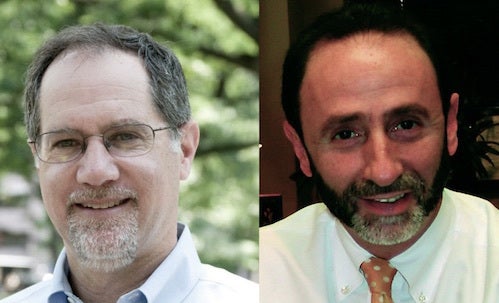
Co-authored by Marc Schindler, Executive Director, Justice Policy Institute
With new crime statistics released by the FBI showing an increase in overall violent crime, including homicides, it is critical to interpret this data carefully so we understand its implications for our crime-fighting efforts. The good news is that we are far safer than we were during the crime spike of the 1990s -- a time where we saw an acceleration of policy choices that led directly to the “mass incarceration” challenge that policymakers across the spectrum are trying to shift away from.
Now is not the time to panic and lose the momentum we are seeing in justice reform. Instead, we should strive to better understand the uptick in crime and in that analysis separate out the juvenile and adult crime trends. And what that initial review of data shows is that while the rise in reported overall violent crime in the last year should draw our attention, particularly when the increase is concentrated in low-income communities that are home to many of our most vulnerable young people, juvenile violent crime is still at 20-year lows. In the last year alone, the number of youth arrested for violent crimes actually dropped by 3.1% and it is down almost 50% in the last ten years.
We need to interpret this new information carefully so we can avoid the misguided “tough on crime” policies that followed the 1990s crime spike. Since then, we have learned too much about what works to keep us safer, including better understanding the harmful impact overreliance on the justice system has on communities of color, to make the same mistakes again.
In response to the spike in juvenile crime in the 1990s, nearly every state in the country responded by passing laws that made it easier to prosecute youth as adults, and we saw dramatic increases in the number of youth incarcerated in large, prison-like facilities. Research published since then has shown that these policies and practices do not increase public safety, and actually lead to young people of color receiving harsher treatment than white youth, even when charged with similar offenses.
It is also important to note that young people under age 18 represent a very small fraction of crime overall, and are not the primary drivers of violent crime in our communities. Years ago when we worked in government, we frequently briefed elected officials with data showing that juveniles represented a very small percentage of the people involved in crime, particularly the most violent crimes. This continues to be the case today: 10 – 17 year olds are 10.34 percent of the U.S. population, but represent only about 9.33% of those charged with murder and non-negligent manslaughter, according to the latest analysis from the federal Office of Juvenile Justice and Delinquency Prevention of arrests for 10 – 17 year olds. In short, youth are under-represented in this data and certainly not driving the uptick we are experiencing.
In the years since we turned the page on “tough” sounding policies, juvenile justice systems have focused more on rehabilitative approaches, like using assessment tools to drive decision making, and enhancing collaboration between child welfare, education, mental health and juvenile justice systems. Since we started using strategies like these, both juvenile crime and juvenile incarceration declined dramatically.
These kinds of juvenile justice approaches also hold promise to interrupt the pathway from youth to adult crime. After Connecticut "Raised the Age" in 2007 – which changed the law to treat 16- and 17-year-olds as juveniles instead of as adults—the prison population dropped to its lowest level in 17 years. Similarly, Missouri’s state director of adult corrections credits the success of his state’s acclaimed juvenile justice approach and its low recidivism rates for slowing prison population growth, avoiding the construction of three new prisons.
Most young people, even those who engage in more serious behavior, will age out of delinquency. But having a job, connections to schools, and strong, positive relationships with caring adults are factors in further supporting our youth in transitioning lawfully to adulthood. This shouldn’t surprise us, and as parents, we know these are exactly the types of strategies we are employing to increase the likelihood that our own children will become successful, law-abiding adults. The data and research speak to an overall approach to how we should treat young people when they are delinquent. The vast majority can be safely managed while at home, where they can be connected to family, school, work, and if needed, treatment, like any young person might need.
Let’s respond effectively to the new crime statistics. Our best approaches in juvenile justice will get young people on the right track and keep them from committing crimes. When we rely on the approaches used in effective juvenile justice systems, we can keep our communities safer in the short-term, and break the long-term cycle of crime and violence.
Shay Bilchik is Director of the Center for Juvenile Justice Reform at Georgetown University’s McCourt School of Public Policy. He previously served as Administrator of the federal Office of Juvenile Justice and Delinquency Prevention within the U.S. Department of Justice. Marc Schindler is Executive Director of the Justice Policy Institute. He previously served as Chief of Staff and Interim Director of Washington, DC’s Department of Youth Rehabilitation Services.
